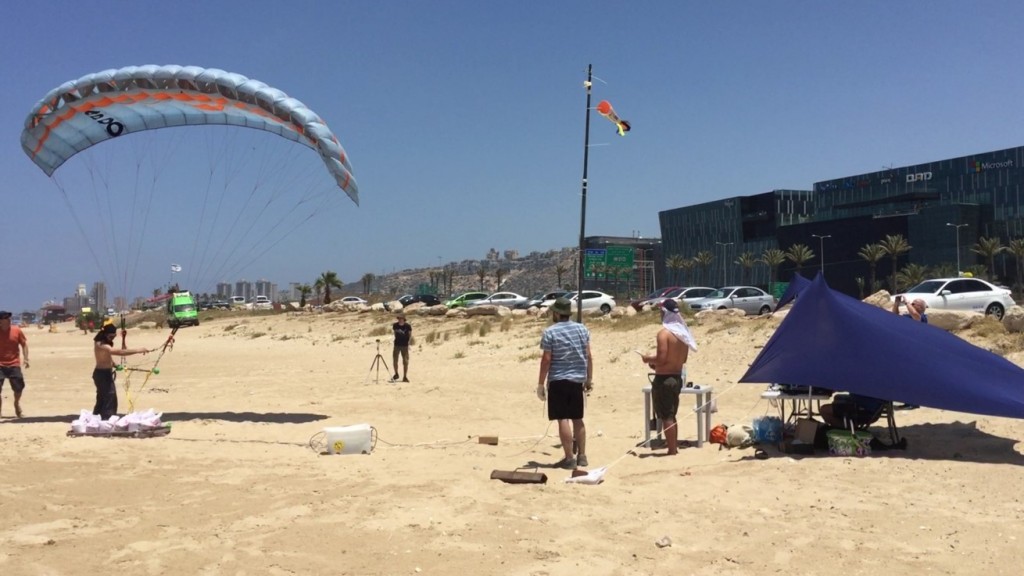Parachute Disaster Relief System
Technion Students Develop Unique Parachute Disaster Relief System
One-ton disaster relief load successfully dropped from high altitude hits bull’s eye in tests, thanks to hi-tech parachute’s guidance system and student initiative
HAIFA, ISRAEL and NEW YORK (Jan. 24 2017) – Students in the Technion-Israel Institute of Technology Faculty of Aerospace Engineering have developed a unique way to help disaster victims: from extremely high altitudes they drop a PANDA on them. PANDA stands for “Parachuted Assistance for Natural Disaster Areas.”
In a test late last year, the students successfully dropped supplies from a cargo plane flying at altitudes of up to four plus miles high – and were able to place a 2,000 pound load in a target area pinpointed to within 100 meters of their mark. The parachute’s hi-tech guidance system the students developed could greatly improve the delivery of aid to disaster victims where land-based efforts are not possible and without the risk of traditional parachute supply drops from cargo planes greatly missing their mark.
“In disaster areas, vital infrastructure such as roads and railroads leading to the affected area are often destroyed or severely damaged, making it impossible for ground-based vehicles to deliver aid,” explained project supervisor Associate Prof. Benjamin Landkof, of the Faculty of Aeronautical Engineering. “Alternative methods for supplying food and first aid are needed.”
Dropping supplies from the air via parachute is an acceptable and highly utilized way to get supplies to disaster victims. But traditional, round parachutes cannot be steered after being dropped. And success in getting supplies where they are needed requires a cargo plane’s pilot to drop the supply bundle from a relatively low altitude to prevent the parachute from drifting away on the wind.
“In addition to the risk to responders involved in dropping items from a cargo plane flying at low altitudes, the margin of error is great,” said Prof. Landkof. “Sometimes the bundle lands hundreds of meters from the target area. Because of these limitations, remotely controlled parachutes were developed to enable slowing the parachute’s fall shortly before landing. The PANDA guidance system navigates the parachute’s way to the desired target by means of a flight computer, two servo motors, GPS, batteries and various gauges.”
The year-long student project was carried out in cooperation with aviation product company APCO Aviation. Experiments were performed on a demonstration parachute supplied by the company. System development processes included simulations and analyses of the parachute, developing improvements, and performing field experiments (see attached picture).
“Our first semester on the project was devoted to characterizing the requirements, building specifications, and reviewing the activity in this field around the world,” said engineering student Nahum Eisen. “The second semester was dedicated to practical development of the parachute, simulations and field tests showing the system worked and was able to land the supplies close to the target – within 100 meters – when dropped from an altitude of seven kilometers, or nearly four and a half miles.”
A goal of APCO Aviation was to improve its existing parachute and, as a result of the student project, the company was given recommendations for improvement.
The student team members included Nahum Eisen, Gilad Gotlieb, Amir Baidani, Avihai Ben-Naim, Tzahi Calderon, Amir Yanai, Daniel Potashnikow, Gal Rosenthal and Michal Vahav.



